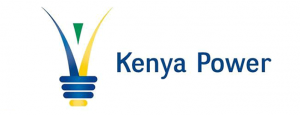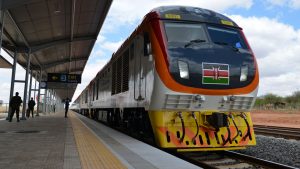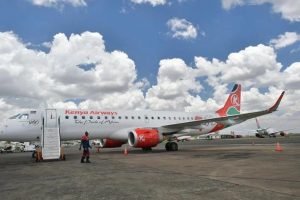The East African nation of Kenya is according to reports, planning to spend a total of 36 Billion Kenyan Shillings on the rescue of state owned establishments which have been making losses during the still ongoing Coronavirus pandemic. These state owned establishments include Kenya Airways, Kenya Power, alongside 3 of the biggest public universities in Kenya.
The latest bulletin released by the International Monetary Fund (IMF) made it known that the 36 billion Kenyan Shillings in exceptional support to State Owned Enterprises (SOE) will be channeled solely towards supporting said Enterprises during the financial year which will end in June of 2021.

In the words of the International Monetary Fund (IMF), “All such extraordinary support is being based on careful evaluation of need and accompanied by steps to ensure that the entities are put on a sound footing.”
The move is also part of the 2.34 billion United States Dollar financial packages which were approved earlier this month (April 2021), following the request by Kenya for financial assistance under the Extended Credit Facility and Extended Fund Facility setups.
The financing package which will go on for a period of 3 years will amongst other things, support the next phase of the Kenyan governments response to the ongoing Coronavirus pandemic, while also reducing the nation’s debt vulnerabilities and providing resources which will adequately protect t vulnerable groups.
As stated earlier the State Owned Enterprises (SOE) in the list include the Kenya Power And Lighting Company (KPLC) more popularly known as Kenya Power, Kenya Airways, a number of public universities. Affected establishments have all experienced significant reductions in their revenue generated.
The total number of State Owned Enterprises (SOE) who are being faced with huge risks fiscal wise include, the Kenya Railways Corporation, Moi University, Kenya Airports Authority, Kenyatta University, Kenya Electricity Generating Company PLC (KenGen), Kenya Power And Lighting Company (KPLC), Kenya Airways, and Nairobi University.

At the end of May 2021 it is expected that the National Treasury will have prepared an in-depth and forward looking financial evaluation of the Top 15 to 20 State Owned Enterprises (SOE) which have enormous fiscal risks. It will also be expected to setup a strategy for addressing the financial pressures present in the State Owned Enterprises (SOE) sector.
This will include a framework for making decisions regarding reforms and interventions while putting into consideration the program’s fiscal targets and the limited fiscal space.
The International Monetary Fund (IMF) made it known that the ongoing Coronavirus pandemic led to a severe financial stress in a number of entities both completely owned by the government, and partially owned.
In a number of scenarios the government owned enterprises had already been faced with financial difficulties before the Coronavirus pandemic hit. The added financial difficulties brought on by the still ongoing Coronavirus pandemic has led to the liquidity support from the government becoming a necessity.

Over the last 5 years for example, Kenya Power has been faced with a decline in its financial performance as well as an increase in costs, delays with regards to tariff approval, and demand growth that was below expectations.

The railways corporation which is owned by the Kenyan government saw a drop in its profitability as well during the financial year for 2019 to 2020 even though it experienced an increase in its revenues. This is because it bagan to service the on lent loans which had been contracted by the National government in order to facilitate the construction of the Standard Guage Railway (SGR).
Kenya Airways just like other airlines was negatively affected by the travel restrictions implemented in 2020. It had however been accumulating losses since 2015.
At the close of the financial year which ended on the 31st of December 2020 the national carrier recorded its highest loss ever of 330 million United States Dollars.
The renewed lockdown measures which have been out in place in Kenya, have reportedly made things more severe for the Airline which was gradually migrating to the cargo side of the business in order to adequately make up for the drop in passenger traffic.

According to the International Monetary Fund (IMF) the profits of the public entities outside of the budgetary central government dropped by a third in 2019 to 2020 to 62.5 billion Kenyan Shillings which is 0.6 percent of the Gross Domestic Product (GDP), due to the fact that very many of the affected enterprises experienced drops in profits, with a significant number of them experiencing far from minor losses.
How informative was this article? Are there any other news topics, categories, or How To topics, that you would like us to write on? Feel free to reach out to Mpesa Pay in the comment section.


